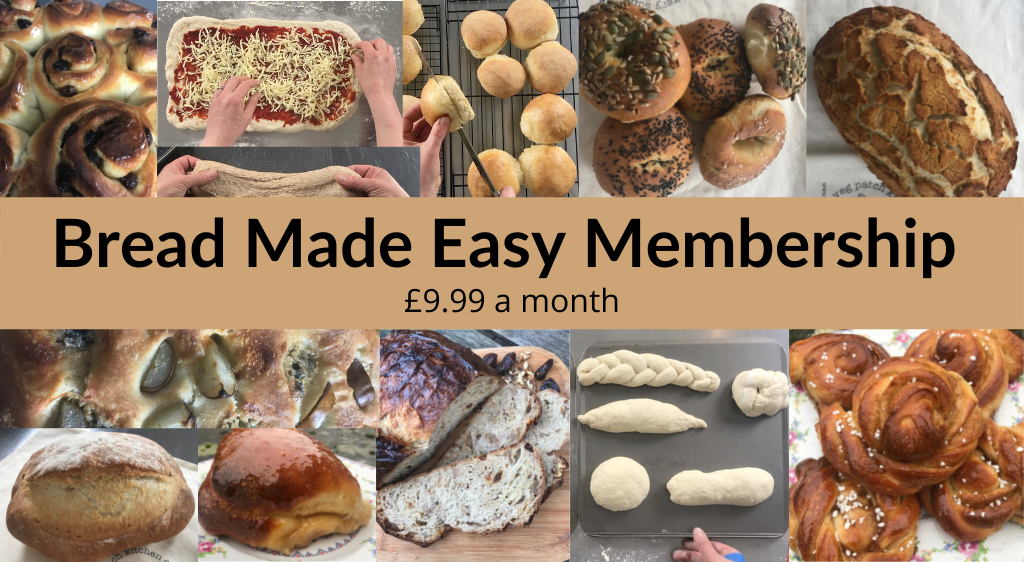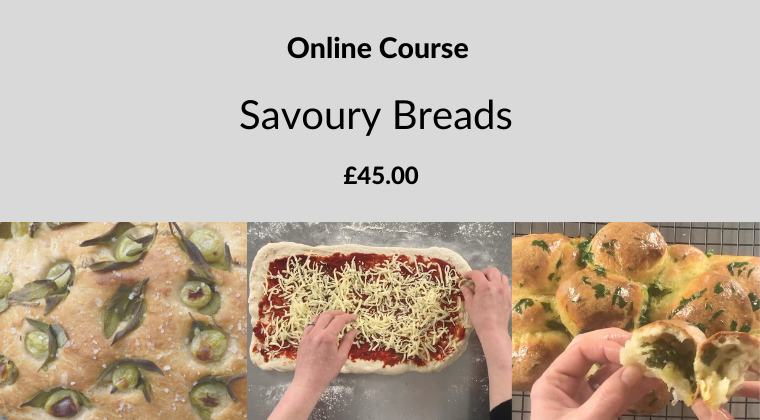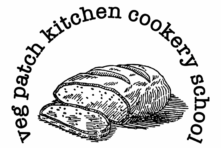My Bread Made Easy Membership will transform your bread making skills. When you become a member you get access to a lot of benefits. This includes all of my pre-recorded online courses that you can watch at your own pace in the comfort of your own home, even whilst you are baking. You get access to or exclusive community so that you can post questions, phots of your recent bakes and share your successes and failures. You can also join me for a monthly live demo and bread chat with fellow members.
Bread Success Journey

Bread Basics
A great place to start whether you are new to bread making or already familiar with the art of bread making is the Bread Basics online course. This course covers all of the basics and more. Even if you are already accomplished as a baker this course is worth taking as a starting point as it shares my method for making bread which forms the basis of all the other courses available to you.
- The stages of bread making, so that you fully understand the process from start to finish
- The ingredients and equipment that you will need
- How to mix your dough properly
- How to develop the gluten in the dough using the stretch and fold method instead of kneading. This method makes bread making very easy and makes it easier to fit making a loaf into a busy day.
- You will learn how to knead dough in case that is the method you prefer.
- To convince you of the benefits of the stretch and fold method I show you a comparison of this method versus kneading
- How to use a stand mixer in the best way to develop your dough
- You will learn what to expect as the dough ferments and my top tips to fit this fermentation around even the busiest day
- How to shape your dough as a bloomer or for a loaf tin
- How to shape your dough as a round loaf and how to use a banneton (proving basket)
- How to tell when your loaf is ready for the oven – getting this right can be tricky but it’s important for a great tasting and looking loaf.
- The technique for scoring/slashing your loaf so that it can expand in the oven and why this is important
- My top tips for preparing your oven ready to bake your loaf
- How and why you steam your oven
- How to test your loaf is fully baked and why you should let it cool fully before eating it.
This course will give you a great foundation for making the breads in the other courses.
Understanding the science of bread
Once you have master the basics then understanding the science of bread will help you to get better at making it. When you have a thorough understanding of the process you can begin to troubleshoot your dough or eliminate problems before they become problems.
These courses will help you properly understand what is happening as your dough develops:
- Understanding the science of bread will help you understand the anatomy of the wheat grain, the role of proteins, starches and enzymes, water and salt in your dough. Learn how the temperature of your dough affects fermentation, what happens when your bread is baking. Understand how gluten works and what Baker’s Percentages are and how they work.
- Understanding yeasts explain the three different yeasts (easy bake, fresh and active dried) and how to use them.
- What is gluten? explains all about gluten which will help you to understand more fully what is happening as your dough develops. This will help you to troubleshoot your dough more easily. (This is also included in the Understanding the science of bread course above).
- How to use the tangzhong method is a short course that shows you a useful technique for improving the keeping quality of your bread and to make sweet, soft bread (this course is also included in the Advanced Breads course).
Practical help
Practical advice when you are starting on your bread journey is always helpful and in the two courses below I share top tips for making great artisan loaves:
- How to use a banneton introduces you to what a banneton (proving basket is used for), how to shape your loaf for a round banneton, how to transfer your loaf into the oven, how to stop your loaf sticking and what to use if you haven’t yet purchased a banneton but would like to give it a go.
- How to use a dutch oven introduces you to a way of cooking your loaf inside an ovenproof container to get great oven spring and a gorgeous crust.
Advanced knowledge and techniques
When you have a grasp of the basics and the science you will want to take a deeper dive into the world of bread. The following courses will help you:
- Advanced Breads shows you how to use preferments (poolish, biga, pate fermentee) to make ciabatta, bagels and baguettes. Using a pre-ferment helps improve the flavour and texture of your bread. Once you understand how to use pre-ferments you can add them to any bread recipe, especially when you understand baker’s percentages (bakers math). I also show you how to use the tangzhong method to make soft, flavourful bread that has better keeping qualities.
- How to use a soaker in your bread shows you the benefits of soaking seeds, nuts, dried fruit before adding to your loaf. I explain the process and share a recipe for you to try using a soaker.
You can cancel your subscription at any time.
The recipes
Once you have mastered the basics you will be ready to dive into the courses that show you plenty of ways to make delicious bread at home. These course are so much more than a list of recipes. I show you how to flavour and shape your dough in lots of different ways so that you never have to get stuck in a rut making the same bread again and again. Once you have learned these techniques the world of bread really is your oyster.
Savoury Breads
- Marmite bread
- Tomato loaf
- How to shape a variety of rolls (the shaping skills can be transferred to larger loaves)
- Make focaccia with different toppings
- Wild garlic pull apart loaf
- Pesto and harissa swirl bread
- Pitta breads
- Pizza bases and pizza rolls
- Tiger bread
- Bagels


Sweet Doughs
- Cinnamon knots
- Chelsea buns
- Shropshire butter buns
- Chocolate babka
- Brioche
- Teacakes
- Date & walnut loaf
- Bonus Lesson: What happens when you add fats and sugar to dough
Christmas Breads
- Pear & blue cheese focaccia
- Harissa & pesto Christmas tree pull-apart loaf
- Mincemeat wreath
- Cinnamon star
- Stollen
Easter Breads
- Hot cross buns
- Tsoureki
- Potica
- Chocolate babka
- Wild garlic pull apart loaf
Flatbreads
- How to make naan without yeast
- How to make naan with yeast
- Peshwari naan
- Peshwari cookie
- Flour tortilla
- Tortilla chips
- Roti
- Parathas
- Pitta Bread
Crackers and how to use your sourdough discard
- Three sourdough discard crackers
- Wholemeal sourdough crackers
- Crackers without sourdough discard
- Digestive biscuits
- Other ways to use your sourdough discard
Scones & Soda Bread
- Fruit or plain white scones
- Brown scones & variation for cheese scones
- Brown soda bread
- White soda bread
How to Make A Sourdough Starter
Step by step instructions to show you how to make a sourdough starter from scratch.
Cobblers & Dumplings
- Plain dumplings
- Tomato & oregano dumplings
- Fruit cobbler
- Savoury cobbler
Using up leftover bread
- Bread pudding
- Savoury bread pudding
- Bread & butter pudding
- Aromatic Shropshire pudding
- Recycled loaf

